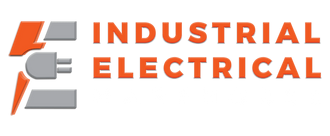The significance of using Electrical Conduit Fittings cannot be overstated. These essential components ensure the safety, efficiency, and longevity of your electrical systems. Whether you're working on residential, commercial, or industrial projects, selecting the right conduit accessories is crucial to maintaining compliance and protecting wiring from damage.
Key Takeaways
- Understand the vital role of Electrical Conduit Fittings in electrical installations.
- Learn about the different types of wire conduit fittings and their applications.
- Discover best practices for selecting and installing the right electrical conduit accessories.
What Are Electrical Conduit Fittings? A Beginner’s Guide
Electrical Conduit Fittings are vital components of any electrical conduit system, serving as connectors and protectors for wiring. They come in various shapes, sizes, and materials, each designed to meet specific installation requirements. Whether working with rigid metal conduit (RMC) or flexible plastic conduit, using high-quality conduit fittings ensures a secure and code-compliant electrical setup.

Types of Electrical Conduit Fittings & Their Uses
Choosing the right wire conduit fittings is essential to maintaining a reliable and safe electrical conduit system. Below are the most common types:
Locknuts and Bushings
- Locknuts secure conduits and fittings to electrical boxes, preventing loosening over time. They are typically made of steel or aluminum for durability and corrosion resistance.
- Bushings smooth rough conduit edges, protecting electrical wires from abrasion during installation and operation.
Couplings and Connectors
- Couplings join two conduit sections, ensuring structural integrity. Types include set-screw, compression, and slip couplings, each suited for different conduits.
- Connectors attach conduits to junction boxes, device boxes, or other enclosures. They come in various styles, including push-in, compression, and threaded connectors.
Elbows, Bends, and Offsets
- Elbows allow conduits to change direction without kinking. Available in 45° and 90° angles, they facilitate smooth cable routing.
- Bends and offsets help navigate around obstacles or adjust conduit elevation while adhering to electrical code standards.
Adapters and Reducers
- Adapters transition between different conduit types or sizes, ensuring a seamless wiring pathway.
- Reducers allow connection between conduits of varying diameters while maintaining system structural integrity.
Why Electrical Wire Conduits Are Essential for Safety
A well-installed electrical conduit system protects wiring from physical damage, moisture, and electromagnetic interference. Using high-quality conduit accessories helps prevent hazards such as short circuits, corrosion, and overheating, ensuring a safe and long-lasting electrical installation.
How to Choose the Best Conduit Box for Electrical Installations
When selecting a conduit box, consider the following:
- Type of Conduit: Ensure compatibility with PVC conduit, metal conduit, or flexible conduit.
- Size and Capacity: The box should provide sufficient space for all wires and connections without overcrowding.
- Installation Environment: Outdoor applications require weatherproof conduit boxes, while indoor installations may have less stringent requirements.
- Electrical Load Requirements: Choose a conduit box that supports the current capacity needed for your system.
How Cable Conduits Improve Electrical System Efficiency
Modern electrical infrastructure depends on cable conduits to protect and route wiring efficiently. Pairing electrical conduit accessories with durable conduit boxes and fittings ensures smooth electrical operation and compliance with safety regulations.
Best Practices for Installing Electrical Conduit and Fittings
Planning Your Route
- Conduct a pre-installation survey to determine the best conduit path.
- Ensure sufficient access points for maintenance, such as junction boxes and conduit bodies.
Choosing the Right Materials
- Select the appropriate wire conduit fittings for your application (rigid, flexible, metallic, or non-metallic).
- Ensure all conduit accessories are compatible with the electrical system.
Installation Techniques
- Secure conduits using straps, clamps, or brackets to prevent sagging.
- Use proper bending techniques to maintain conduit structural integrity.
- Ensure all fittings, couplings, and connectors are tightly fastened to prevent movement or separation.
Regular Inspection and Compliance
- Inspect the installation to ensure compliance with electrical codes and safety standards.
- Conduct regular maintenance checks to ensure long-term reliability.
FAQs About Electrical Conduit Fittings
How do I choose the right size of conduit fitting?
Ensure that the conduit fitting matches the outer diameter of your conduit for a secure fit.
Can I use plastic conduit fittings with metal conduit?
It is best to use compatible materials to maintain the integrity of the electrical conduit system.
How often should I inspect my conduit fittings?
Annual inspections are recommended to maintain safety and compliance.
Are you ready to elevate the safety and efficiency of your electrical projects? Explore Industrial Electrical Warehouse's extensive range of conduit fittings and electrical accessories today and empower your installations with the quality and reliability you deserve.


